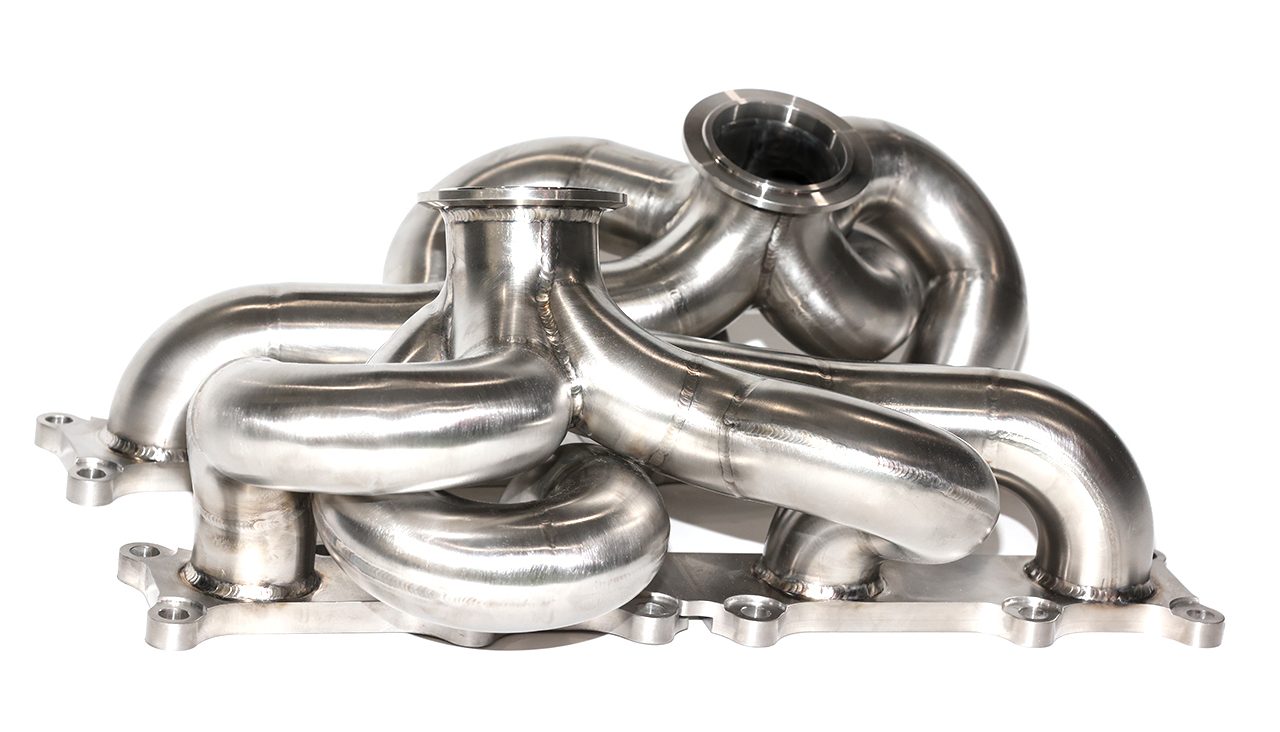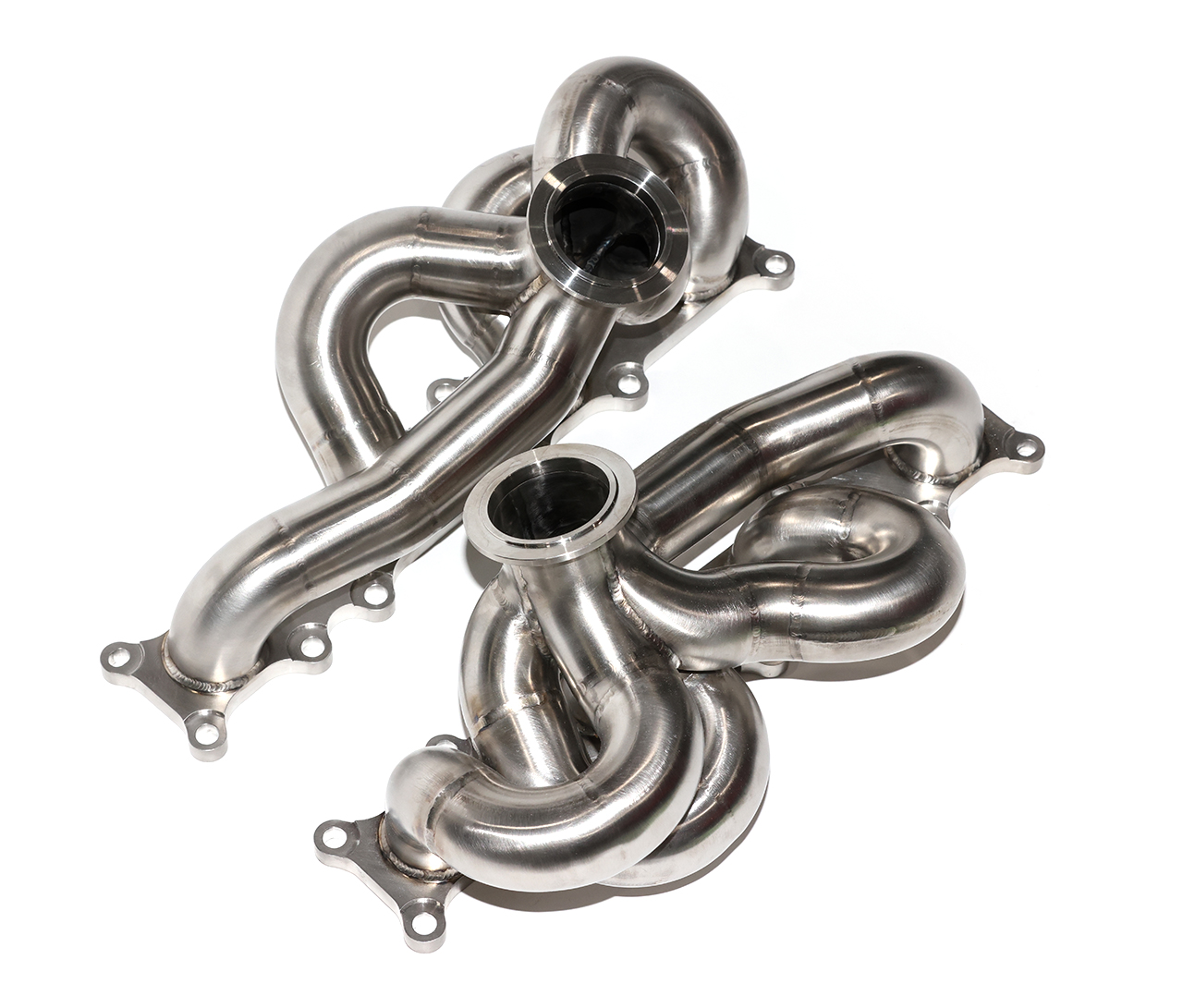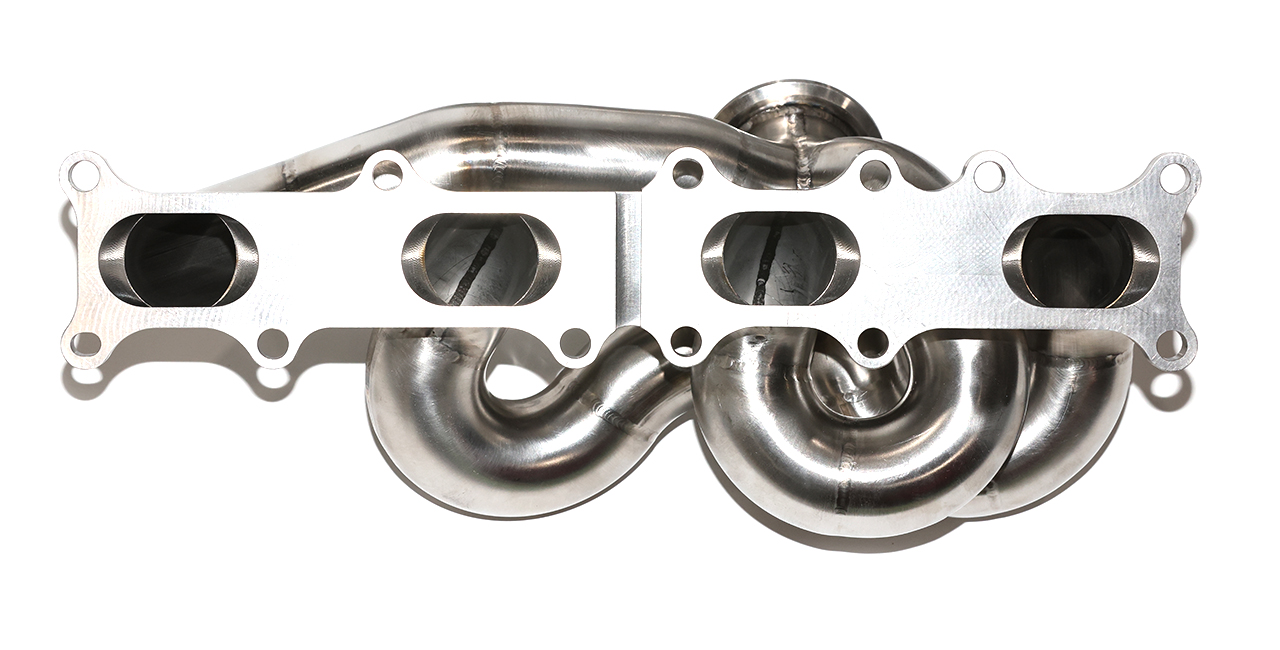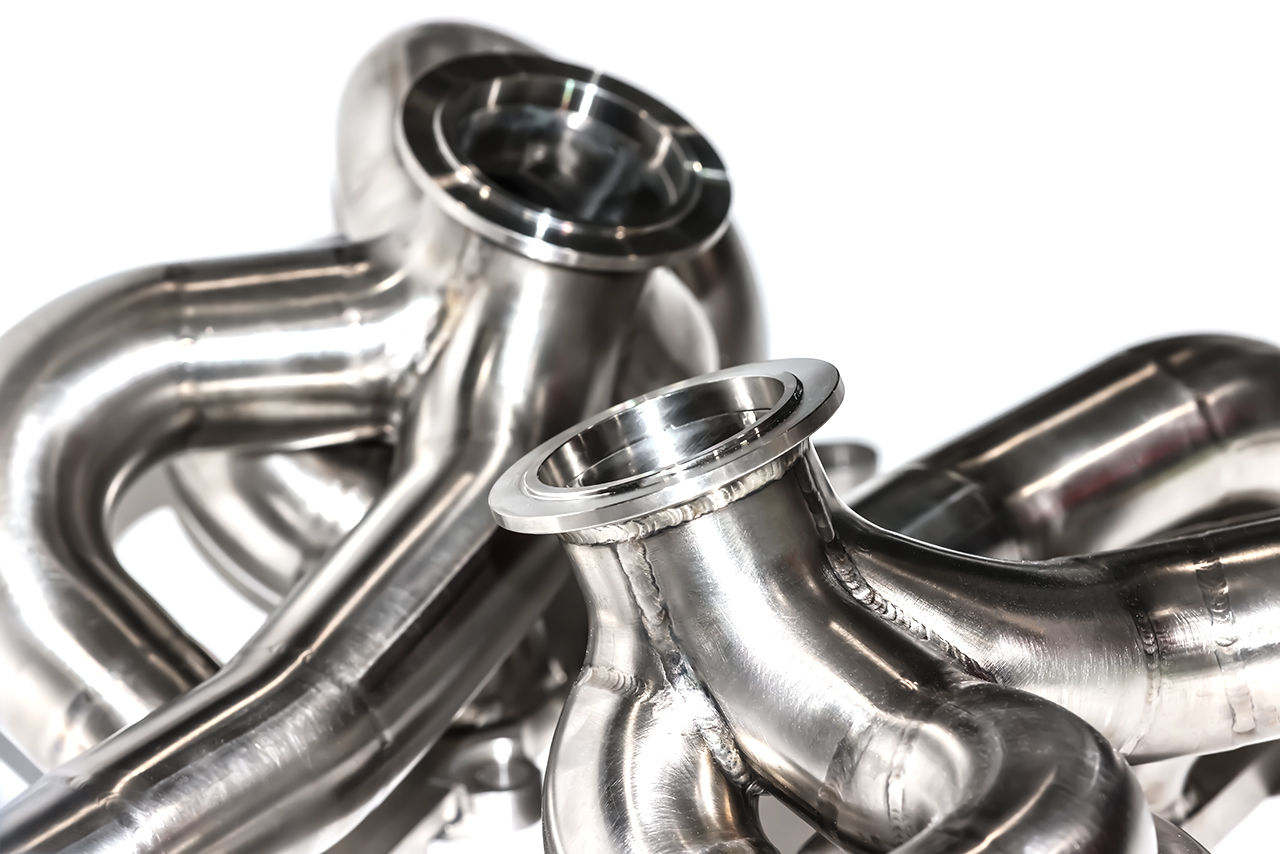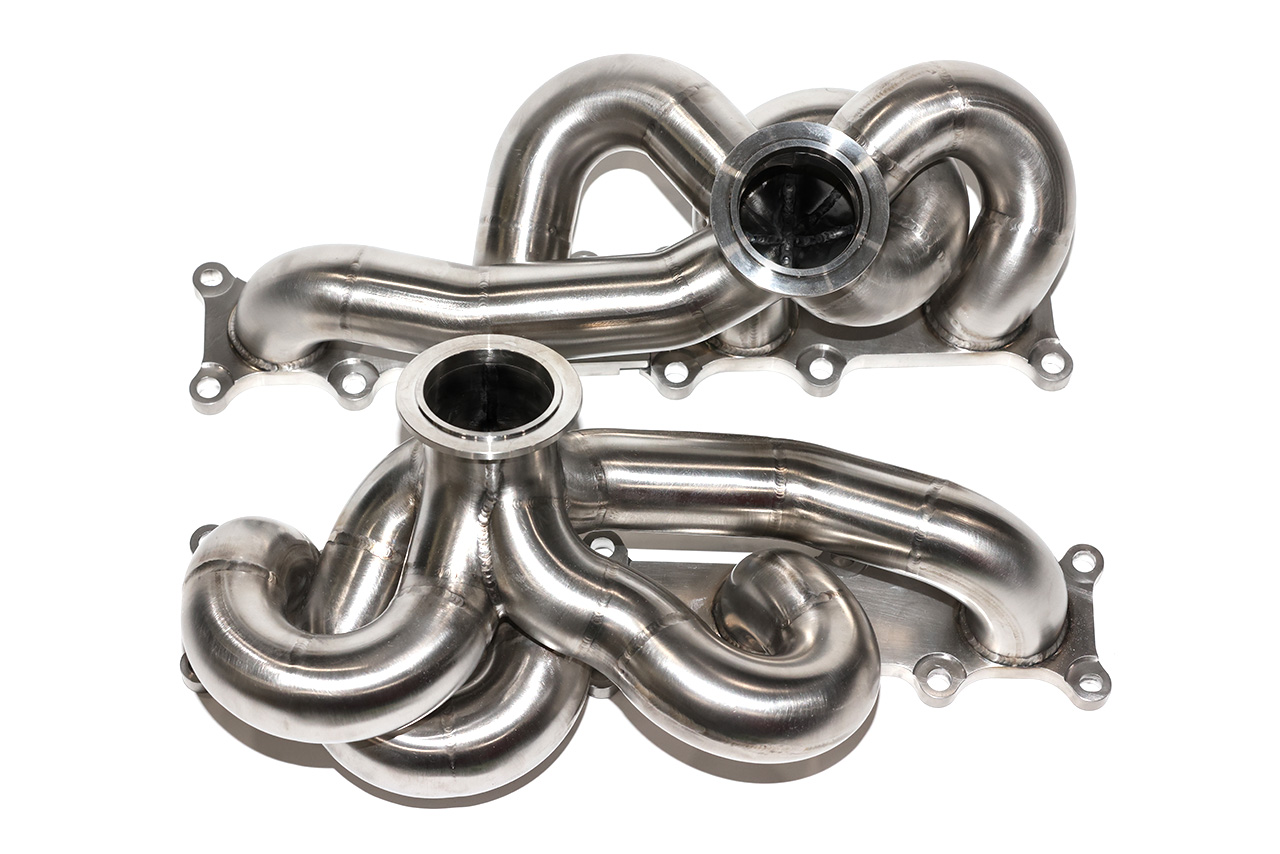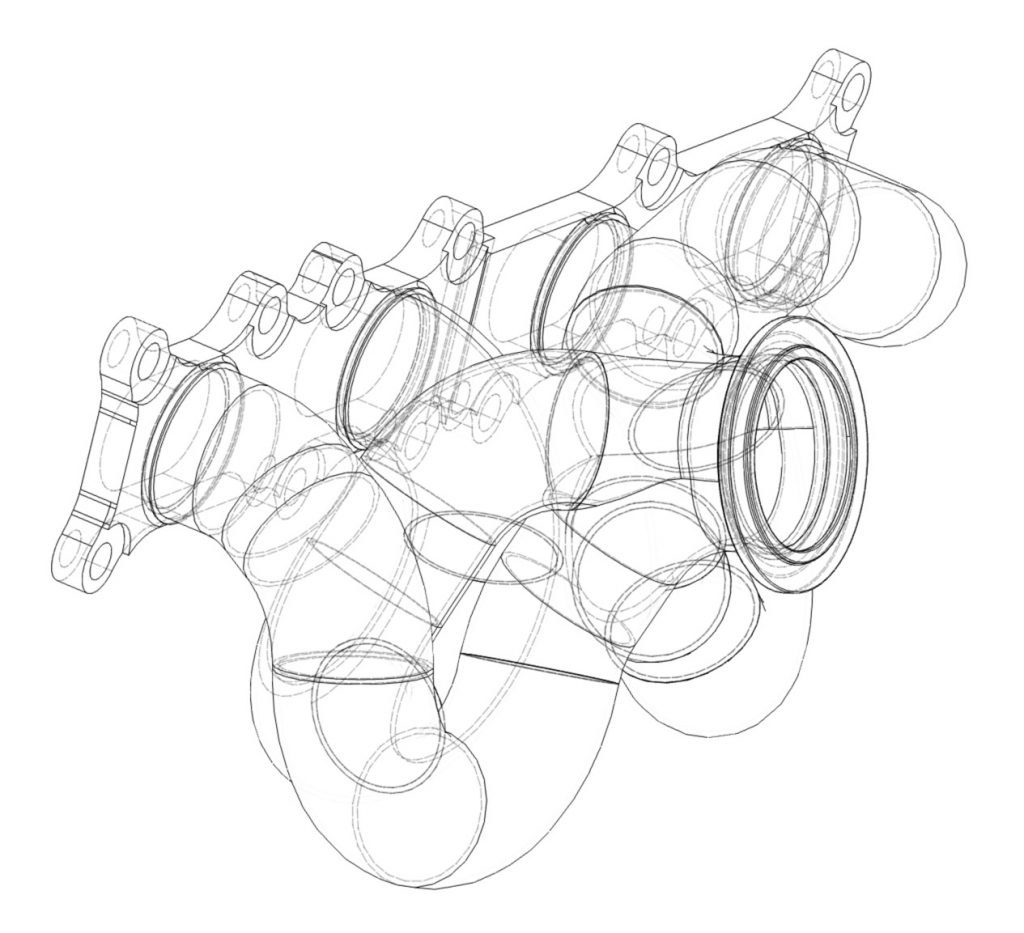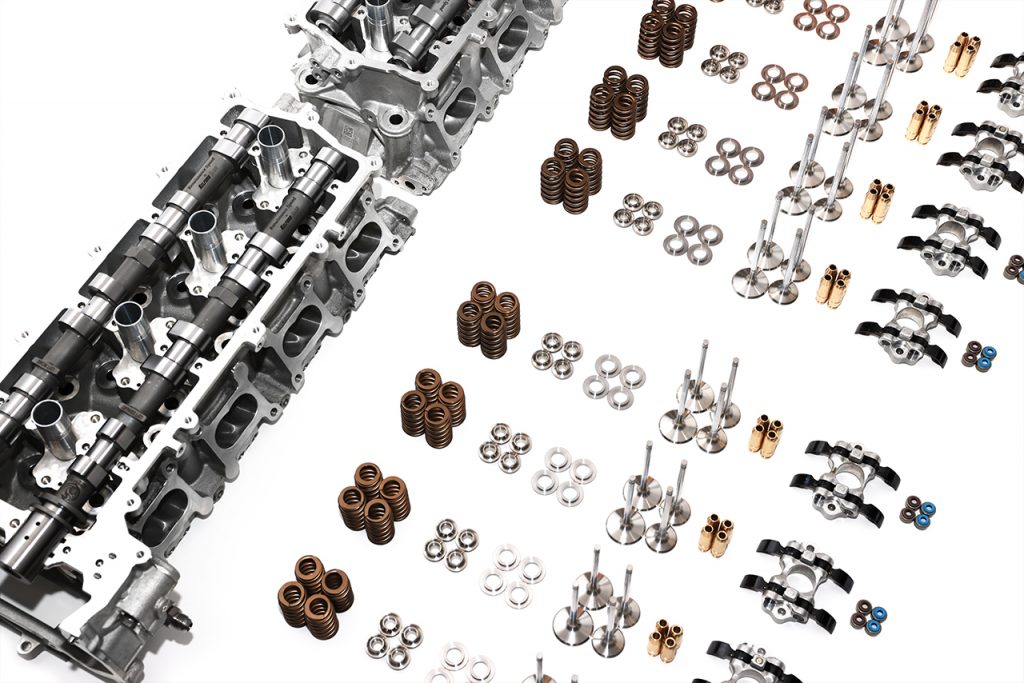Description


The only McLaren exhaust headers designed for quick spooling 1200+ HP builds, while using only the best high-temp exotic material available, Inconel® SuperAlloy. Larger diameter runners allow up to a 50% increase in exhaust gas flow with less than 1% variance in flow from runner to runner, while also being a featherweight with a 27% Weight Reduction. 100% bolt-on with a lifetime warranty. These are the same exhaust headers found on our ABSOLUTE build packages.
M838 FIRST GENERATION
To date, McLaren has produced two different exhaust manifolds designs for the M838. The first generation was a “log-style” cast exhaust manifold and can be found on the 12C and 650S. While not aesthetically pleasing, the log-style manifold has the shortest runner length, therefore it will have the best transient turbocharger response. Turbocharger transient response is colloquially referred to as “boost lag”, so in this instance, the first generation M838 manifold will have the least boost lag. The drawbacks of this design is that there are no clear separation of exhaust gas pulses, so each runner starts to effect other runners. Additionally, the short runners are great for midrange torque, but will create significant back-pressure at high RPMs.
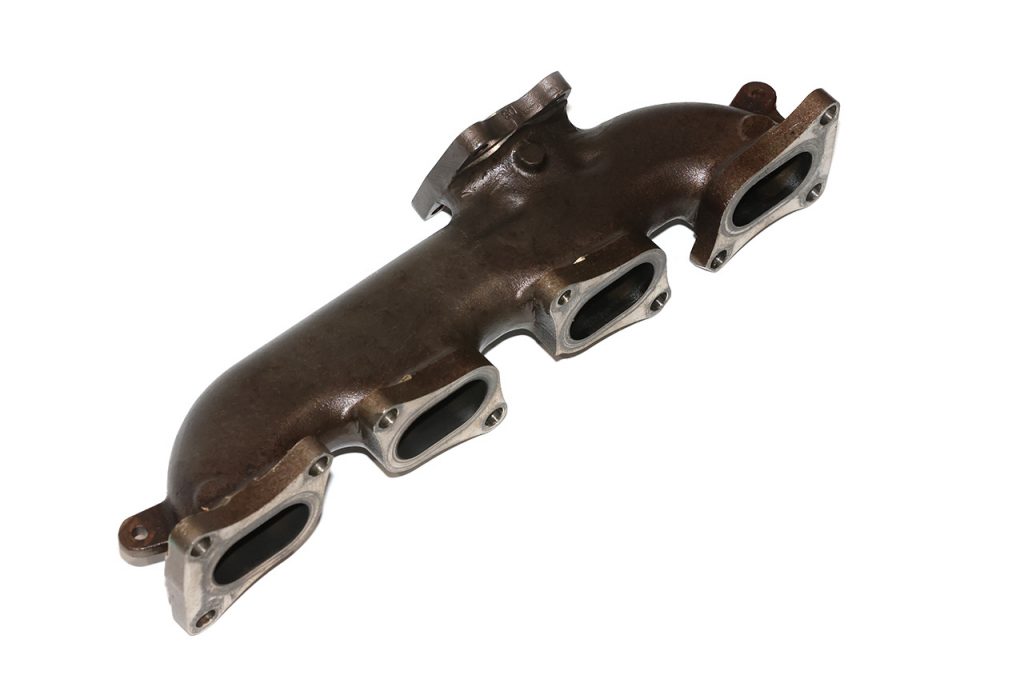
M838 SECOND GENERATION
Starting with the 675LT and continuing with the 570S and 600LT, McLaren introduced a tubular manifold with individual runners for the M838. From the factory, this was an improved design and is a great option for builds making 1000 HP or less.
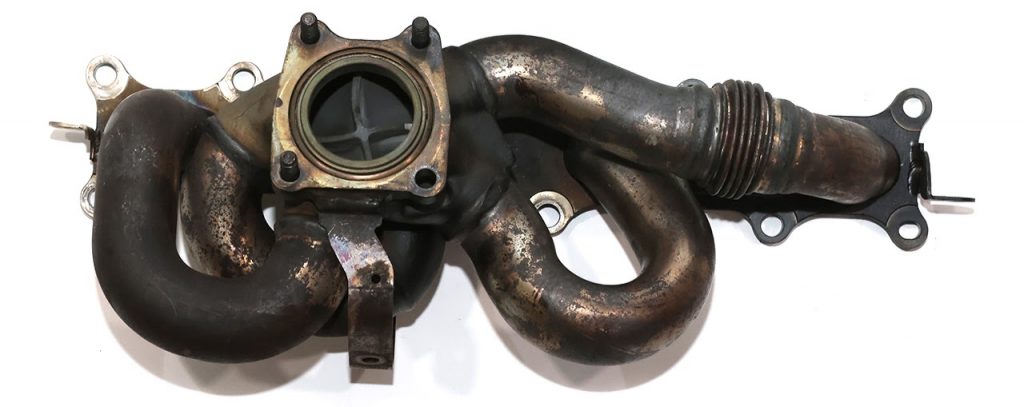
While these manifolds are well designed for the packaging constraints, they are not capable of providing the flow required to extract the most from our newest ABSOLUTE engine builds, targeting in excess of 1200 HP.
To be able to unlock the full potential of our ABSOLUTE built cylinder heads and built engine, we knew we had to tackle the last frontier...
DESIGN PHASE
We took inspiration from the second generation M838 manifold and set a goal to modify the intricate design, rather than reinventing the wheel. To facilitate the higher volume of exhaust gases from our ABSOLUTE builds, we increased the runner diameter. This diameter change resulted in a cross sectional area increase of over 40%. To minimize the energy losses within the exhaust flow, each runner was optimized for possible bend radius reduction or rerouting in some cases.
Once we decided to remove the stock collector flange and support a native v-band for larger turbochargers, this enabled significant optimization over the stock manifold. The stock manifold has several tight bends and contractions near the collector that limits the distribution of high energy exhaust flow.
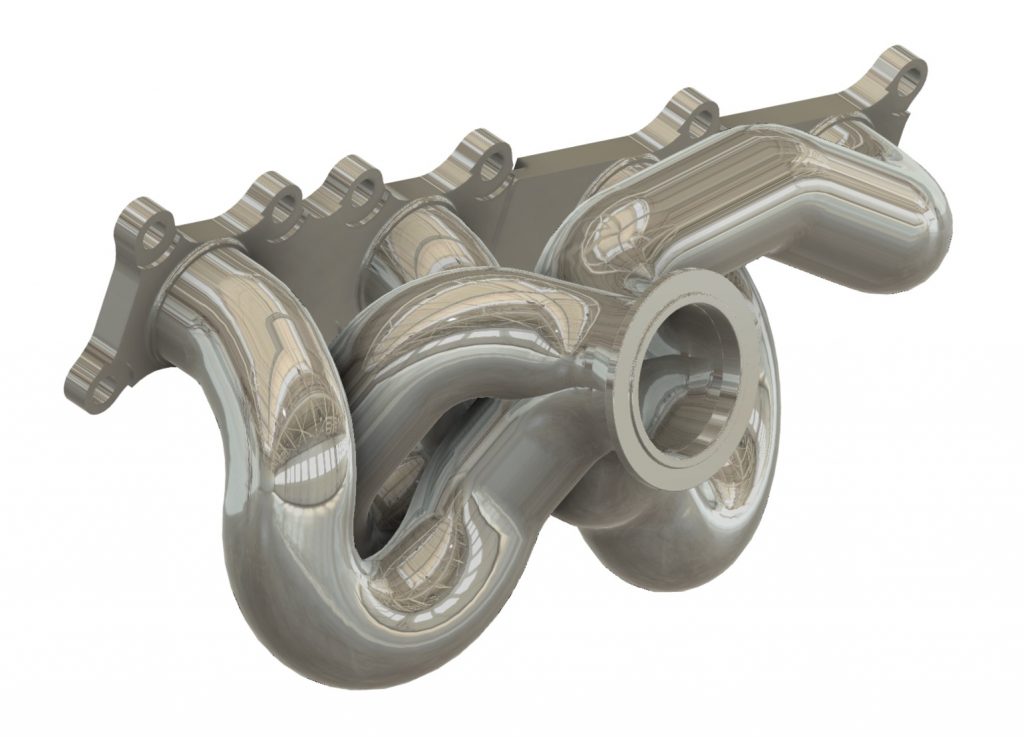
In terms of material composition, we were tempted to use common 304 series stainless steel for the cost savings. However, since our ABSOLUTE exhaust headers will be supporting the weight of large frame Garrett turbochargers, these headers are effectively “load-bearing” structures. Once you factor in the high exhaust gas temperatures during a race, it became obvious that we will need the best exotic SuperAlloy that money can buy...Inconel® is rated at a working temperature of 1800 F , which is near the melting temperature of most steels. This gives it high tensile strength, even at ridiculous temperatures.
Once the dust settled, it was clear that we not only achieved our design criteria, but also managed to shave about 5 pounds of sprung mass, which is a 27.6% reduction, from our ABSOLUTE builds.
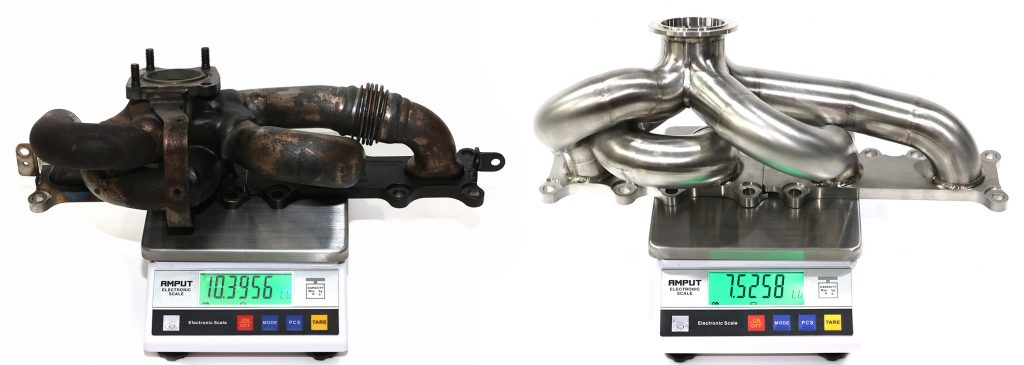
ENGINEERING VALIDATION
To ensure we optimized our design to its fullest, we undertook developmental testing using the latest digital process of computational fluid dynamics (aka. CFD). This process involves the use of advanced computer software to calculate the fundamental equations governing fluid flow. CFD has been used for a long time in the automotive industry particularly for external vehicle flows and over the years the complexity and the accuracy of the mathematical models and processes has improved. However, for the complex exhaust gas flows, where multiple gasses and particles at varying temperatures mix, the equations become significantly more complex. Combine this with the transient nature of the exhaust flow, which varies as each valve opens and closes, and you are left with simulations that take months to solve at a time.
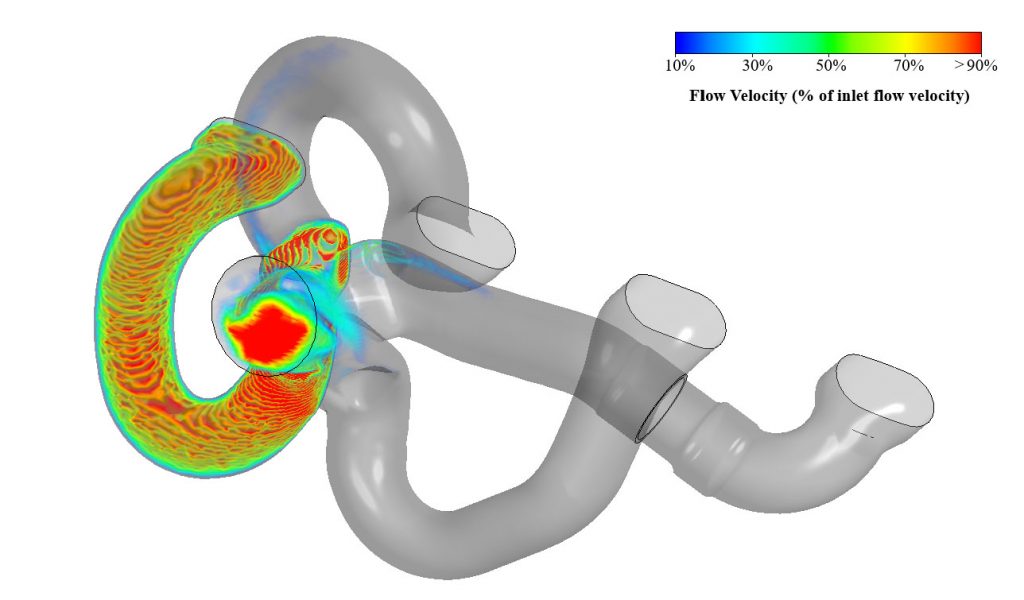
In order to get around this, freeze frames in time are taken that cover the important moments within the flow, allowing for significantly faster turn around times for each simulation. The advantages of using CFD over a flow bench are, not only does it enable testing at the early stages of concept development without the manufacture of costly models, but it also enables the use of representative gases and temperatures that would be found in the exhaust stream of our high performance engines, something a typical flow bench could not replicate. Furthermore, CFD allows for visualization of the flow throughout the manifold. As the old adage says, “a picture is worth a thousand words”, but the picture is now showing you millions of data points colored by pre-determined variables.
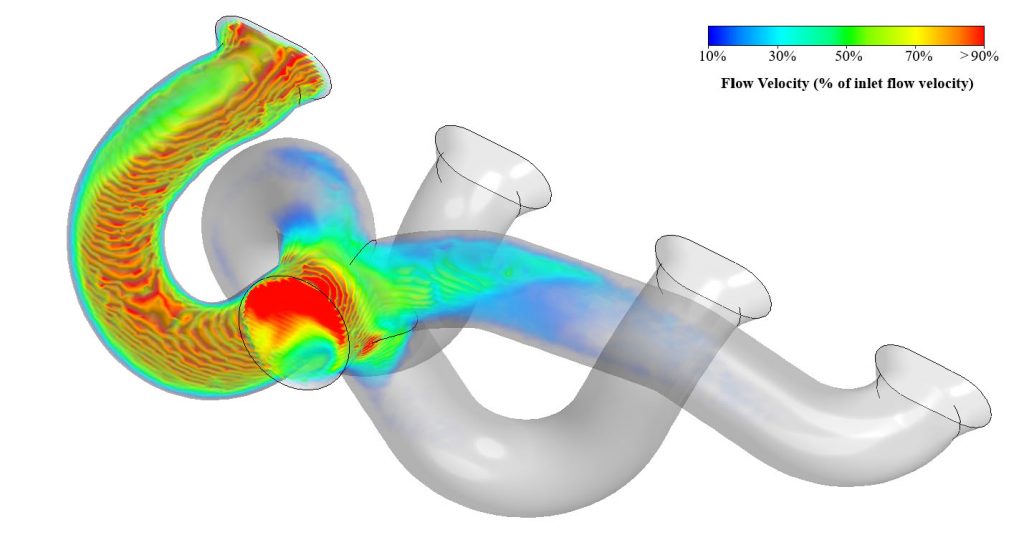
The moment chosen to study were that of peak flow for each runner, where flow becomes supersonic and any further increases in mass flow would require exponential increases in the pressure difference between inlet and outlet conditions.
A more complete comparison of the stock and the ABSOLUTE headers can be seen in the graph below:
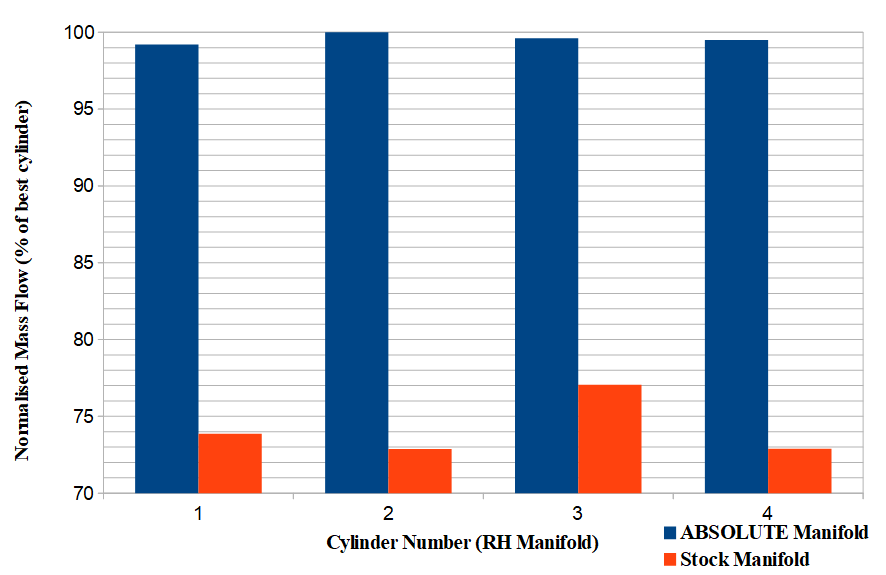
For those of you who are just after the numbers, the ABSOLUTE – McLaren Lightweight Inconel Exhaust Headers are able to flow over 50% more exhaust gas mass, with a runner to runner imbalance of less than 1%. Compared to an over 4% imbalance in mass flows between runners on the stock manifolds
The result of these improvements in design is a header system that will reduce the energy losses (both temperature and velocity) within the exhaust gasses during their journey from our ported cylinder heads to our big power turbos. Thereby allowing for a quicker spooling setup, that is able to achieve maximum boost earlier in the rev range and sustain maximum power for higher up the rev range.


